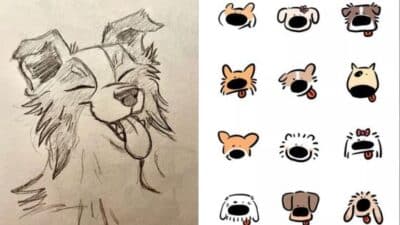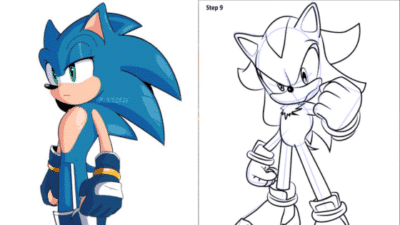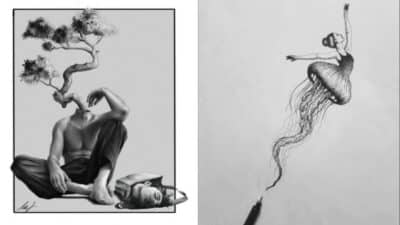Drawing the sun is a fun and simple way to bring brightness to any artwork. Many people enjoy creating different styles of sun drawings, from cartoon suns with smiling faces to more detailed sketches with rays and shading. A basic sun drawing usually starts with a circle for the sun’s center and lines or shapes around it to show the rays.
People use sun drawings in many projects like cards, posters, and decorations because the sun is a symbol of warmth and happiness. There are lots of ways to make a sun drawing unique by changing the shapes, colors, or expressions. Whether someone is a beginner or more experienced, they can find easy steps and ideas that make sun drawing enjoyable and creative.
Basic Techniques for Sun Drawing
Drawing a sun involves simple shapes and clear lines. Using the right tools and following easy steps helps create a nice sun drawing. Adding rays and even a face can make the sun look more lively and fun.
Choosing Materials and Tools


It is best to start with basic materials like pencils, erasers, and paper. A sharp pencil helps in making neat outlines. For coloring, crayons, colored pencils, or markers work well.
Paper choice can affect the drawing. Smooth white paper is great for clean lines and bright colors. Thicker paper is useful for markers to avoid bleed-through.
Using a black pen or marker to trace over pencil lines makes the sun stand out. Different pen thicknesses allow changes in style, such as bold or delicate rays.
Simple Step-by-Step Sun Drawing


First, draw a circle to be the sun’s main shape. It does not need to be perfect; a freehand circle gives character.
Next, add simple straight or slightly curved lines around the circle to show sun rays. Rays should be evenly spaced for balance.
After this, erase extra pencil marks if needed. Going over the lines with a pen can help keep them clear.
The sun can be colored with yellows, oranges, and reds to give it a warm look. Color inside the circle and rays carefully for a neat finish.
Adding Rays and Facial Features


Rays can be drawn in different styles. Pointed triangles make sharp sun rays, while wavy or zigzag lines create a softer, energetic effect.
For facial features, simple eyes, a nose, and a smile can be drawn inside the sun’s circle. These features add personality to the sun.
Keeping the face simple with round eyes and a curved smile makes it friendly-looking. Adding small details like blush spots can be charming.
Using color on these features with bright shades makes the sun more cheerful and appealing.
Creative Sun Drawing Ideas
Sun drawings can take many forms, from simple shapes to more detailed scenes. Using different styles and ideas helps bring the sun to life in unique ways. Some drawings focus on fun, cartoon-like suns, while others use abstract designs or add nature elements.
Stylized and Cartoon Suns


Stylized suns often have bold shapes and bright colors. They may include smiling faces or rays that look like curls or zigzags. These suns are easy to draw and great for kids or beginners.
Artists can experiment with simple shapes like circles for the sun’s body and triangles or lines for rays. Adding eyes, a mouth, or freckles makes the sun look friendly and playful.
Cartoon suns can be used in children’s books, posters, or any design needing a cheerful and lively sun. The key is to keep the design simple but expressive.
Abstract and Artistic Suns

Abstract sun drawings focus on unique patterns and shapes rather than realistic details. Artists use swirls, dots, or repeating lines to create energy and flow.
This style allows more freedom. The sun can look like a burst of color or a mix of geometric shapes. Many artists use bright yellows, oranges, and reds, but mixing in blues or purples adds contrast.
Abstract suns often work well for modern art, logos, or mood-setting pieces. The goal is to capture the sun’s brightness and warmth without sticking to traditional sun shapes.
Sun Drawing in Nature Scenes


Adding a sun to a nature scene means thinking about how it fits with the landscape. The sun can be rising or setting, casting soft or sharp light on trees, mountains, or water.
Artists often draw the sun partially behind hills or clouds to show time of day. Using warm colors near the sun and cooler colors farther away creates depth.
In nature scenes, the sun’s rays might stretch across the sky or reflect in water below. Drawing shadows and light carefully makes the scene feel real and alive.
| Idea Type | Key Features | Best Uses |
|---|---|---|
| Stylized and Cartoon | Simple shapes, faces, bright colors | Kid’s art, posters |
| Abstract and Artistic | Patterns, bright and mixed colors | Modern art, logos |
| Nature Scenes | Sun position, light effects | Landscapes, scenic drawings |
Tips for Enhancing Your Sun Artwork
Adding depth and life to a sun drawing often depends on thoughtful use of color and careful shading. Blending these elements well can make the sun appear more dynamic and interesting.
Using Color and Shading


Choosing the right colors is key when drawing the sun. Warm tones like yellows, oranges, and reds work best to show heat and brightness. Using different shades of these colors can create a sense of light and shadow.
Shading adds dimension. Darker colors near the edges or behind the sun help it look rounded and glowing. Shading don’t need to be perfect; small variations make the sun look more natural.
To keep it simple, try layering colors. Start with a base color like yellow, then gently add orange or red over parts of it. This gives the sun a soft glow that feels more alive than a flat yellow circle.
Blending Techniques for Realism


Blending colors smoothly can make a sun seem real and warm. Soft transitions between colors avoid harsh lines. Using tools like blending stumps, brushes, or even fingertips helps mix colors gently.
For pencil or pastel drawings, blending must be light to avoid muddy colors. In paintings, using a wet brush to mix acrylic or watercolor paints works well.
A good step is to blend outward from the sun’s center where the light is strongest. This method mimics how light naturally spreads and fades, adding realism to the artwork.
- 157shares
- Facebook0
- Pinterest157
- Twitter0


